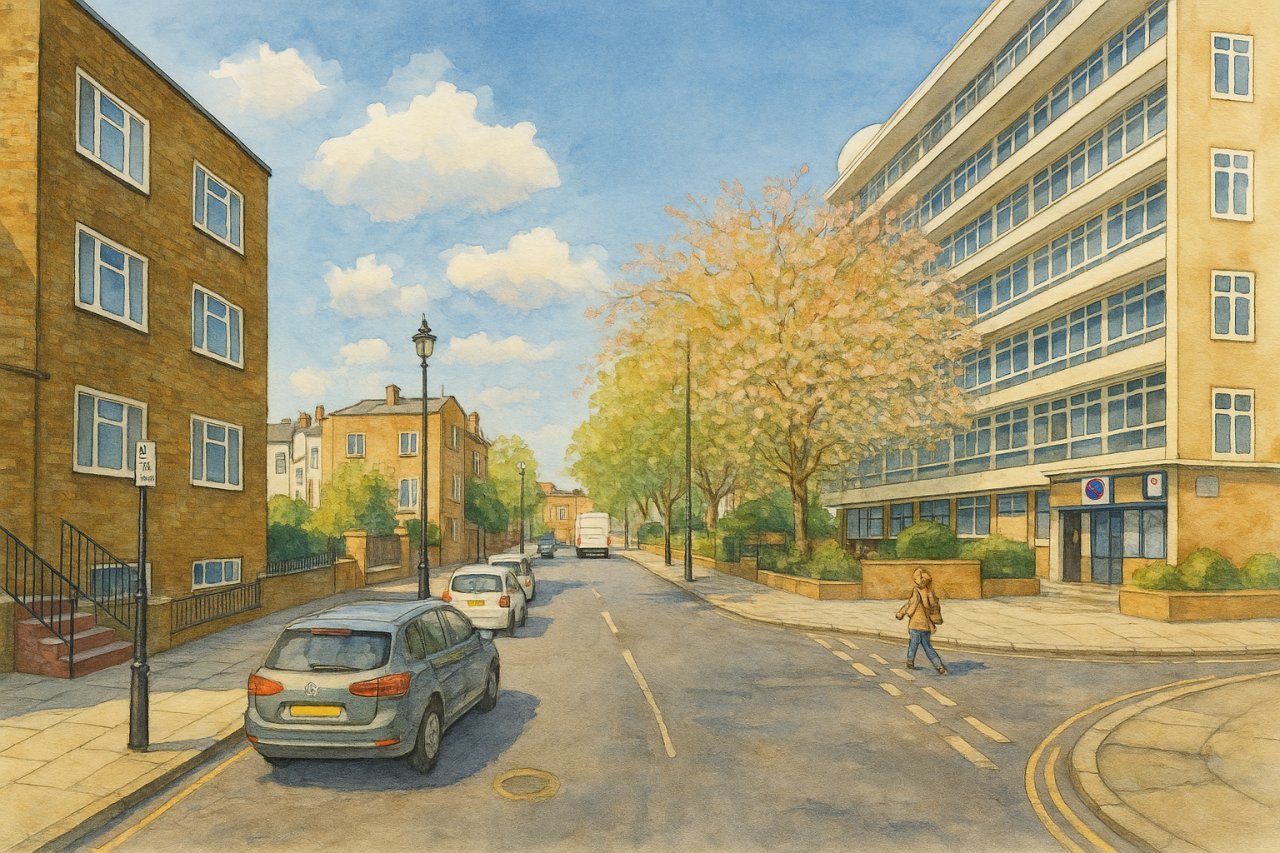
Lupus Street, London
Lupus Street: A Historic and Central London Thoroughfare
Your Guide to the Iconic Lupus Street in London
Lupus Street is one of London's lesser-known but historically rich streets, offering a unique blend of residential and commercial charm. Located in the heart of the city, it’s a great spot for those interested in both local culture and central living. This article dives into the details of Lupus Street, from its length and history to real estate trends and the landmarks that make it special.
Where Is Lupus Street?
Lupus Street is situated in the City of Westminster, in the southwestern part of central London. It stretches through a vibrant area close to Vauxhall and Pimlico, which are both highly sought-after locations. The street’s central location makes it an excellent base for exploring the capital’s iconic attractions and enjoying its bustling atmosphere.
Length of Lupus Street
At approximately half a mile (800 meters) long, Lupus Street offers a manageable yet significant stretch in the heart of London. It runs from the Pimlico area, heading southward towards the Vauxhall Bridge Road, passing through some of the city’s most lively and picturesque neighbourhoods.
Streets connected to Lupus Street
- Alderney Street
- Aylesford Street
- Cambridge Street
- Churchill Gardens Road
- Claverton Street
- Cumberland Street
- St George's Drive
- St George's Square
- Glasgow Terrace
- Ranelagh Road
- Sutherland Street
- Westmoreland Place
- Winchester Street
The History and Origins of Lupus Street
Lupus Street was originally developed during the early 19th century, and its growth paralleled the urban expansion of London during the industrial revolution. Like many other streets in Westminster, it saw considerable development throughout the Victorian era, with a combination of residential buildings and light commercial establishments being constructed to accommodate the growing population.
How Lupus Street Got Its Name
The name "Lupus" is thought to have historical roots in Latin. Some theories suggest that the street may have been named after a notable figure named "Lupus" from the medieval period, although records are unclear about its exact origins. The name was officially adopted in the early 1800s, when the street began to take shape and become a recognisable part of London’s infrastructure.
How to Pronounce Lupus
The name "Lupus" is pronounced as LOO-pus, with the first syllable rhyming with "loop" and the second pronounced as "pus". In the International Phonetic Alphabet (IPA), it is transcribed as /ˈluːpəs/  .
.
Map of Lupus Street, London
Connecting Roads to Lupus Street
Lupus Street is well-connected to other parts of London, thanks to the surrounding network of major roads. These include:
- Alderney Street
- Bessborough Street
- Cambridge Street
- Charlwood Street
- Churchill Gardens Road
- Cumberland Street
- St George's Drive
- St George's Square
- Sutherland Street
- Turpentine Lane
- Westmoreland Place
- Winchester Street
These roads provide direct access to central London and key locations like Westminster, Vauxhall, and Chelsea.
Major Buildings and Sights Along Lupus Street
As you stroll down Lupus Street, you'll find a variety of landmarks and attractions, both residential and commercial. Among the notable buildings are:
- St. George's Square – A charming residential area known for its impressive Georgian architecture.
- Pimlico Academy – A local educational institution known for its beautiful architecture and community spirit.
- Vauxhall Bridge – A key crossing over the River Thames, offering scenic views of the river and the surrounding areas.

Painting of Lupus Street, London
While the street itself is more residential, the nearby attractions in Pimlico and Vauxhall make Lupus Street an ideal location for both tourists and locals alike.
Real Estate Prices on Lupus Street
Lupus Street, due to its central location and proximity to landmarks, boasts relatively high real estate prices. As of 2024, average house prices along Lupus Street hover around £1.2 million for a mid-sized apartment. This is in line with the residential pricing in the Pimlico and Vauxhall areas, which are considered affluent but less expensive compared to more central London locations such as Mayfair or Knightsbridge.
The street’s prices are relatively affordable when compared to other parts of Westminster, making it an attractive location for those wanting to live close to central London but without the premium of some more well-known locations.
The Character of Lupus Street
Lupus Street is a blend of residential and commercial properties. The area is primarily residential, with a mix of Victorian terraces, Georgian architecture, and modern apartments. While not as affluent as other streets in Westminster, Lupus Street retains a charming, working-class character with a strong community feel.
The street has a lively atmosphere, thanks to its proximity to both commercial areas and local services. It’s an area that balances the hustle of London life with the quiet of a suburban setting, making it ideal for professionals, families, and commuters.
Nearest London Underground Stations
There are several London Underground stations within walking distance of Lupus Street, providing easy access to the wider city. The nearest stations include:
- Pimlico Station (Victoria Line)
- Vauxhall Station (Victoria Line and National Rail)
These stations are both conveniently located, making it easy to travel to central London and beyond.
Fun Fact About Lupus Street
Despite being a relatively quiet street, Lupus Street has a unique place in local folklore. The name "Lupus" is often associated with a myth involving a mysterious medieval figure said to have walked the street at night, leaving behind strange, almost magical occurrences. Locals still like to tell tales of the “Lupus ghost,” though there’s no evidence to suggest that these stories have any basis in fact!